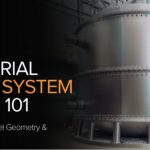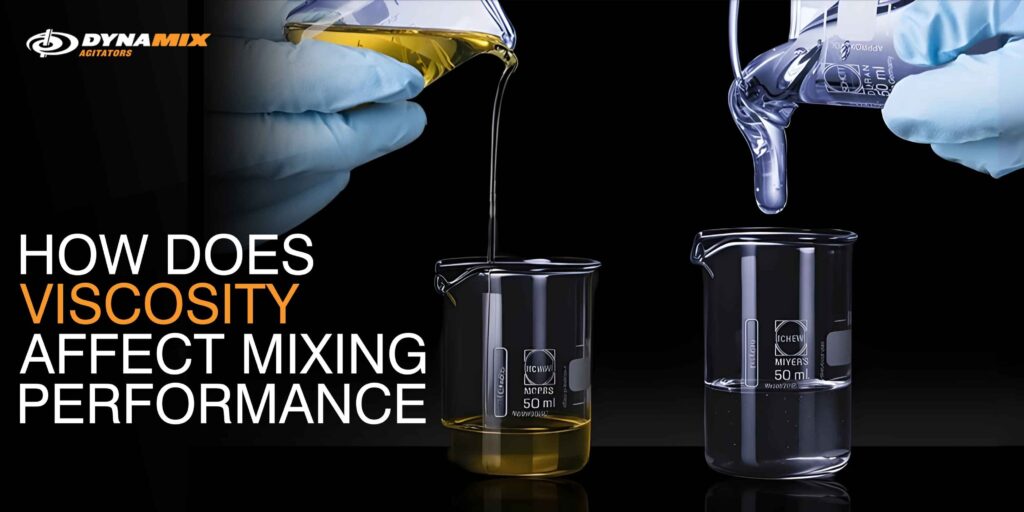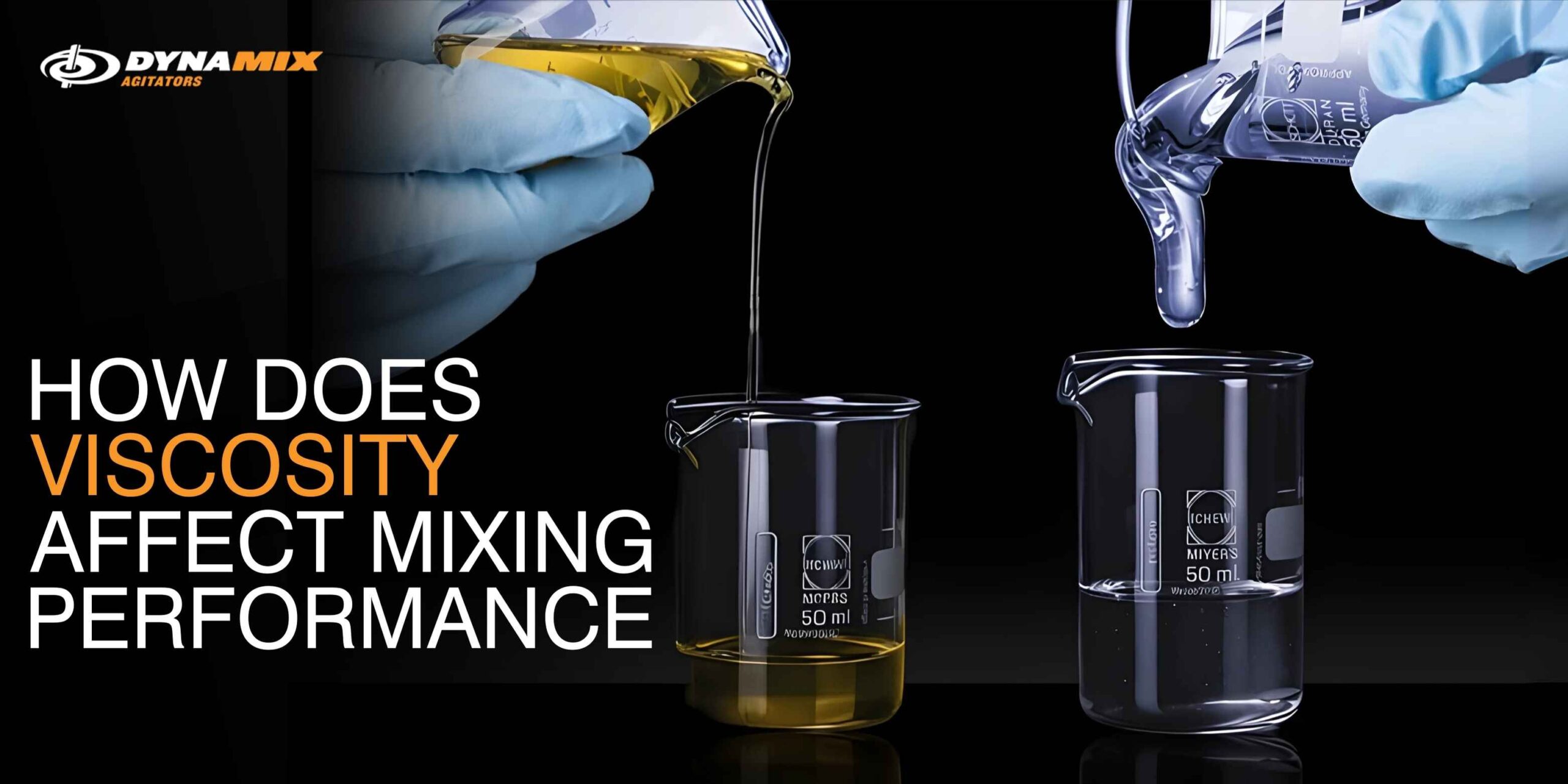- Q: Why is viscosity important in industrial mixing?
A: Viscosity influences flow patterns, and “area of influence”. These are both critical factors in mixing quality for batch mixing or in process mixing. Energy requirements are largely driven by viscosity, and a skilled knowledgeable application engineer can save a lot of energy in design when understanding the characteristics of viscosity and torque. So, overall process efficiency in mixing operations.
- Q: How do you determine the right mixer for a viscous fluid?
A: Evaluate the fluid's viscosity profile, desired shear rate, batch volume, and process goals. Use this data to match the appropriate mixer type and impeller. When Shear and Flow are both critical inputs it is best to consult one of our Application Engineers.
- Q: What are common challenges when mixing high-viscosity materials?
A: These include long mixing times, high energy consumption, inconsistent product texture, and increased mechanical stress on equipment.
- Q: Can Dynamix Agitators handle custom viscosity challenges?
A: Yes. Dynamix designs mixers based on customer-specific viscosity and process parameters, ensuring reliable and scalable solutions for complex applications.
- Q: What are the important factors to consider in industrial mixer sizing and design?
A: Key factors include fluid viscosity, specific gravity, tank geometry, desired flow pattern, impeller type and size, and process objectives such as blending, heat transfer, or suspension.
- Q: How does viscosity relate to mixing performance?
A: Higher viscosity increases fluid resistance, reducing turbulence and mixing efficiency, and often requires greater power input or specialized impeller designs.
- Q: What unit is viscosity measured in?
A: Viscosity is typically measured in SI units in centipoise (cP, or cps), Pascal-seconds (Pa·s) in the CGS system, where 1 Pa·s = 1,000 cP.
- Q: How does Viscosity Relate to Shear in Mixing?
A: Viscosity determines the amount of flow possible in mixing. Shear can be used to decrease viscosity in Psuedoplastic fluids, thus increasing the “ability” to increase flow, but because shear is often a trade off to pumping in impeller design, they can sometimes be offsetting strategies.
How Does Viscosity Affect Mixing Performance?
Understanding the Role of Viscosity in Mixing
In industrial processing, fluid mixing is central to process and quality control. It is important to recognise, and make sure your mixer is configured according to many factors; a primary factor is Viscosity. The physical properties of materials, especially viscosity, dictate how efficiently substances can be agitated, homogenized, or dispersed. Whether in food production, mining processes, water treatment reactions, adhesives, petrochemicals, or any other, viscosity AND it’s nature directly affects design, energy requirements, impeller selection, flow patterns and end-product or reaction quality.
Viscosity refers to a fluid’s resistance to deformation or flow. It influences how easily a substance moves when force is applied. In mixing applications, higher viscosity usually means more energy is required to move the material, and the flow becomes increasingly challenging. In short, viscosity can either facilitate or hinder mixing performance depending on how well it is understood and addressed in the mixer design.
What is Viscosity and How is it Measured?
Viscosity is typically categorized into two types: dynamic (absolute) viscosity and kinematic viscosity. Dynamic viscosity, measured in centipoise (cP), quantifies a fluid’s internal resistance to flow under an applied force. This is the most common use in mixer application, and the beginning of the conversation at Dynamix. Kinematic viscosity accounts for the fluid’s density and is usually expressed in centistokes (cSt).
Industrial facilities often use viscometers or rheometers to determine viscosity. These come in many different shapes and forms. Many are industry specific and for good reason; there are still more properties of viscosity that need to be understood to optimise mixer design. In brief, viscometers are suitable for Newtonian fluids with consistent viscosity regardless of shear rate, rheometers are crucial for non-Newtonian materials whose viscosity changes under stress.

Some Common Tools:
Viscosity plays a critical role in fluid dynamics and mixing system performance. While the earliest methods of viscosity measurement date back to the 1800s, using simple capillary tubes, modern technology has introduced a range of tools designed for more precise, application-specific measurements. Here are some of the most common viscosity measurement techniques used across industries today:
1. Capillary Viscometers
This classical method measures the time it takes for a liquid to flow through a narrow capillary tube under the influence of gravity. Known as Ostwald or Ubbelohde viscometers, these devices are still widely used for their simplicity and accuracy in low-viscosity applications.
2. Zahn Cups
Widely used in the paint and coatings industry, Zahn cups are handheld tools with a small orifice at the bottom. Viscosity is determined by the time it takes for the liquid to drain from the cup. While not highly precise, Zahn cups are valued for quick, comparative measurements on the production floor.
3. Falling Sphere and Piston Viscometers
These devices measure the time it takes for a ball or piston of known density to fall through a fluid. The resulting data is used to calculate viscosity, making it a practical option in settings like marine fuel testing, where rapid assessment is needed. Variants using pistons operate on similar principles and can be found in field applications requiring durability and ease of use.
4. Vibrational Viscometers
In this method, an oscillating sensor immersed in a fluid measures damping resistance, which correlates with viscosity. Vibrational viscometers are ideal for inline or continuous monitoring in both batch and process environments, helping maintain product consistency in real time.
5. Rotational Viscometers
Among the most popular and versatile options, rotational viscometers calculate viscosity by measuring the torque required to rotate a spindle in the fluid. These instruments are often used for quality control across a range of industries. Some models allow continuous monitoring throughout a process, providing valuable trend data. However, torque measurement systems can be mechanically complex, requiring slip rings or alternative transmission methods that may introduce maintenance challenges.
6. Resonant and Wireless Viscosity Sensors
The latest generation of viscosity sensors utilizes wireless torque transducers and resonant frequency technology. These systems eliminate the need for physical connections to rotating shafts, using radio frequency (RF) signals to transmit power and receive data. With no moving parts, these sensors offer high resistance to environmental vibration and are capable of operating across a wide temperature range—ideal for demanding industrial conditions. Their plug-and-play nature also means minimal calibration is required by the end user.
How Viscosity Influences Mixing Dynamics
Mixing high-viscosity fluids presents unique engineering challenges. The thicker the substance, the more resistance it offers to flow and agitation. Here are the primary ways viscosity impacts mixing performance:
Power and Torque Requirements: As viscosity increases, so does the energy needed to agitate the fluid. High-viscosity materials require mixers with higher torque and more robust drive mechanisms. This understanding is the beginning of understanding mixer design.
Flow Patterns: The amount of flow in a fluid is basic to mixing. Low-viscosity fluids allow for turbulent flow with less power, promoting better mixing through shear and convective currents. High-viscosity fluids tend toward laminar flow, which limits mixing zones and requires different strategies to achieve homogeneity.
Impeller Efficiency: Impeller type and speed significantly affect mixing in viscous systems. For example, axial-flow impellers are suitable for low-viscosity applications, while radial or helical ribbon impellers may be necessary for viscous blends.
Heat Transfer: In viscous systems, heat generated during mixing may not dissipate efficiently. This can affect product stability, especially in thermosensitive applications.
Batch Time: Higher viscosities usually mean longer mixing times. Engineers must balance this with productivity demands, often requiring innovative equipment design.
Industries Affected by Viscosity Challenges
Paints and Coatings: These products require precise viscosity control for stability and performance. Incorrect mixer configuration can result in poor pigment dispersion or uneven consistency.
Food and Beverage: From syrups to doughs, mixing systems must manage shear-sensitive materials without compromising texture or integrity.
Pharmaceuticals: Consistency in active ingredient dispersion is critical. Many pharmaceutical mixtures are non-Newtonian and require complex agitation strategies.
Adhesives and Sealants: Extremely high viscosities are common, necessitating mixers capable of withstanding high mechanical loads.
Water Treatment: Even though many applications involve low-viscosity fluids, polymers added for flocculation or stabilization may significantly alter fluid dynamics.
How Customization Improves Mixing Outcomes
Standard mixers rarely accommodate the nuances of highly viscous fluids. Truly optimised mixer design consider the unique characteristics of each process, including tank geometry, batch size, shear sensitivity, and temperature control. Once we have the mechanical design considered we look at the process. Once the process is considered we design for your environment. Often, this last one is most important, and why Dynamix maintains its engineered sales approach.
Dynamix Agitators has built a reputation on delivering engineered mixing systems that address these needs. By leveraging application data and viscosity profiles, Dynamix configures impeller types, drive systems, and mounting styles that optimize mixing efficiency without overengineering.
Customization also supports energy efficiency by avoiding the common mistake of oversizing motors or underestimating torque requirements. Each mixer is developed with longevity, performance, and maintenance simplicity in mind.
Troubleshooting Viscosity-Related Mixing Issues
Problems associated with mismatched viscosity and mixer design include:
Inconsistent Product Quality: Poor ingredient distribution through flow can result in localized over- or under-concentration.
Excessive Wear and Maintenance: Underpowered mixers operating in high-viscosity environments may experience accelerated wear.
Heat Build-Up: Inefficient heat dissipation in viscous media can compromise thermosensitive ingredients.
Regularly reviewing your process parameters and monitoring viscosity changes due to temperature, composition, or shear can help pre-empt issues. Dynamix offers on-site evaluations and support to ensure long-term operational consistency.
Strategic Considerations for Engineers and Operators
Data Logging: Implementing real-time viscosity monitoring enhances process control.
Scalability: Lab-scale testing should mirror full-scale viscosity challenges to ensure success during scale-up.
Material Compatibility: Choose mixer materials that withstand the corrosive or abrasive nature of viscous media.
Automation Integration: For high-viscosity applications, integrating mixers into PLC systems allows better control over speed, torque, and mixing time.

Final Thoughts: Viscosity is the Variable That Matters
While many variables impact mixing success, few are as central and influential as viscosity. Understanding its role, accurately measuring it, and engineering around its constraints allow for superior process outcomes.
Dynamix Agitators has a longstanding commitment to innovation and customer-centric engineering. Our mixers are not just equipment—they are solutions, shaped by viscosity, performance goals, and customer loyalty. Learn more about how we approach mixer selection and customization.
FAQ's

Environmental Factors To Consider When Designing a Mixer
Why Environment Matters in Mixer Designs In the industrial

Mixing Non-Newtonian & High-Viscosity Fluids: Strategies for Shear, Temperature & Rheology Control
Understanding the Complexity of Non-Newtonian and High-Viscosity Fluid Mixing Mixing

Industrial Mixing System Design 101: Impeller Size, Vessel Geometry & Shear Dynamics
Why Understanding Mixing System Design Is Crucial Industrial mixing
Other Recent In The Mix Articles:
Search :
SELECT THE BLOG CATEGORY BELOW
Categories
- Coal Mining (1)
- Crop Protection (1)
- Dynamix Products (7)
- Explosion Proof Motors (1)
- Fertilizer Mixer (1)
- Hand Sanitizers (1)
- Industrial Mixing (51)
- Mechanical Seals (1)
- Mining & Mineral Processing (1)
- Mixer Configuration (25)
- Mixing 101 (23)
- Mixing at Home (5)
- Mixing Principles in Play (9)
- Oil & Gas (1)
- Tank Configuration (4)
- Tote Mixing (2)
- Update (1)
- Water Treatment (28)
- Water Treatment Books (6)
- Water Treatment Innovation (13)
WHAT OUR CUSTOMERS ARE SAYING
Keep up with what's new at Dynamix
Subscribe to our newsletter for helpful technical publications and industry announcements.


